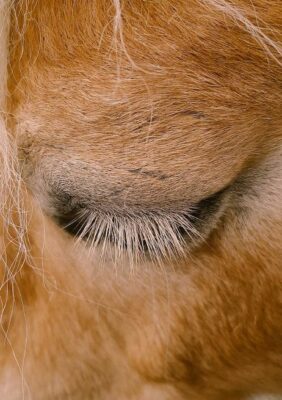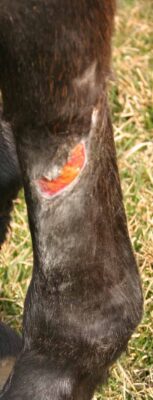What to do and what not to do when your horse has a wound
As a horse lover wants to you naturally want your horse to be healthy and happy. But sometimes an accident can happen and your horse suffers a wound. It is then important to act quickly and appropriately to prevent infections and complications. In this blog post, we discuss what you absolutely must and must not do if your horse has a wound. 
What you SHOULD do with a wound
- Stay calm and assess the situation. Do not panic, but calmly assess how serious the injury is and whether immediate action is needed, such as stopping bleeding.
- Clean the wound gently with clean, lukewarm water. Use a soft cloth or gauze to remove dirt and debris. Rinse the wound thoroughly to wash away bacteria.
- Pat the wound dry with a clean cloth. Do not rub the wound, but dab gently to prevent further trauma.
- Check the wound daily. Keep an eye on whether the wound is healing well and there are no signs of infection such as redness, swelling, pus or a foul odour. Change the dressing if necessary.
- When in doubt, always consult a vet. Especially with large, deep or complicated wounds, professional advice is wise. It is also advisable to call the vet if the wound does not seem to be healing properly.
What NOT to do with a wound
- Do not use hydrogen peroxide, betadine or other disinfectants. These products can slow wound healing and damage healthy tissue. Clean water is sufficient for most wounds.
- Do not smear ointments, powders or sprays on the wound. Agents such as honey ointment and antibiotic ointment may seem like a good idea, but can suffocate the wound and trap dirt. Keep the wound dry and clean for optimal healing.
- Do not close a wound with an airtight bandage. The wound needs to breathe to heal properly. So do not use plastic sheeting or closing plasters, but airy gauze or a compress.
- Don't wait too long to consult a vet. In serious injuries such as deep cuts, severed tendons, fractures or heavy bleeding, quick intervention is crucial for your horse's recovery. Do not hesitate to seek professional help.
Preventing wounds is better than curing them
Of course, an accident can always happen, but with the right precautions, you can reduce your horse's risk of injury:
- Check the pasture and stable regularly for protruding or sharp objects and remove them.
- Use safe and appropriate harnesses that are regularly checked for wear and damage.
- Provide a calm and controlled environment while riding, lunging and grooming.
- Give your horse enough exercise and social contact to prevent boredom and restlessness.
- Provide your horse with the right nutrition and ensure optimal health to support natural resistance and restorative capacity.
Conclusion
A wound on your horse can be a stressful and worrying experience. By acting quickly and carefully, doing the right things and avoiding mistakes, you will help your horse on its way to a speedy recovery. Clean the wound with clean water, cover it with an air-permeable bandage and monitor healing closely. Do not hesitate to seek the help of a vet if the situation calls for it. With proper care, hopefully your horse will soon be enjoying the pasture again, healthy and well!
- The first aid kit for every horse: this should not be missing
- 5 common injuries in horses and how to treat them
- When do you call the vet? Learn to recognise the alarm signals
